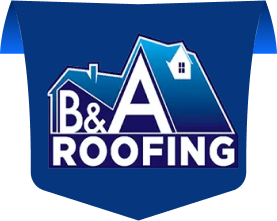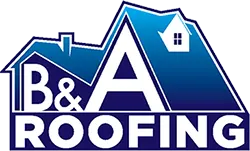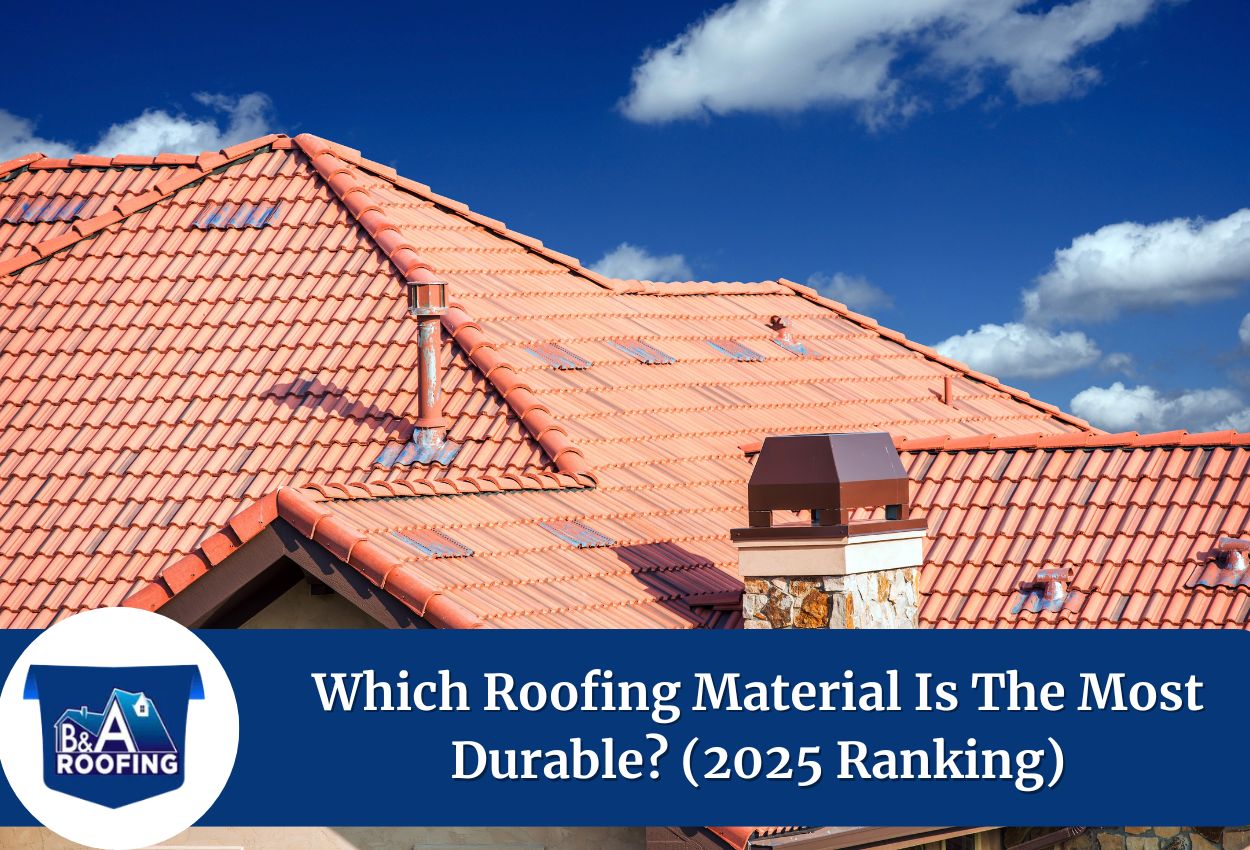With intense storms and weather patterns becoming more common, investing in a durable roof is more crucial than ever. But which materials truly stand the test of time and remain durable over the years?
In this blog post, we’ll take a look at different roofing materials and answer the simple question many homeowners have: “Which roofing material is the most durable?” to help you make the best choice.
Ranking the 10 Most Durable Roofing Materials in 2025 (Plus a Bonus!)
Don’t know which is the most durable roofing material? Here is a list of the top 10 roofing materials to help you understand their durability and make the right roofing decision.
#1. Slate Roof
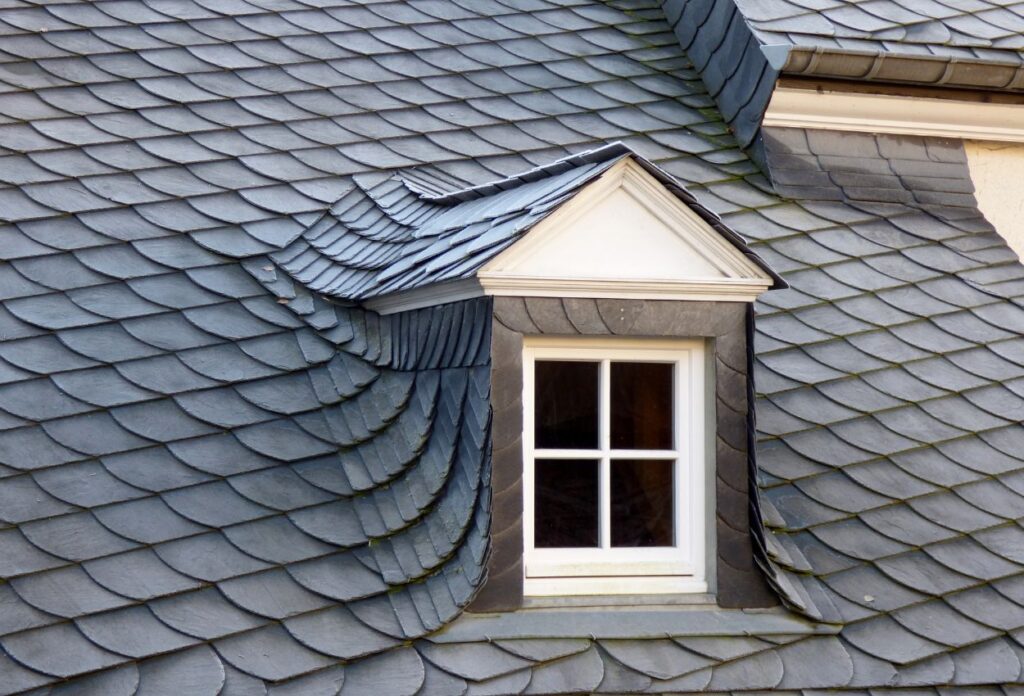
Lifespan: 100+ years
Famous for its durability with timeless beauty, slate stands as arguably the most durable roofing material available today. Created naturally under extreme heat and pressure, slate resists weather damage, water absorption, and temperature changes. It can last an impressive 75 to 100 years or longer, far outlasting most other roofing options. Its ability to withstand fire and resist mold growth makes it perfect for harsh weather conditions. While slate’s weight requires stronger roof support and professional installation adds to its cost, many homeowners value its long-term benefits and eco-friendly qualities as the most durable residential roofing material on the market.
| PROS | CONS |
| Fire-resistant and holds up well in extreme weather. | Expensive to install and repair. |
| Requires little maintenance and resists mold, mildew, and pests. | Very heavy, often requiring extra structural support. |
| Offers a timeless, high-end look with natural textures and colors. | Can crack if handled improperly. |
#2. Clay Tiles
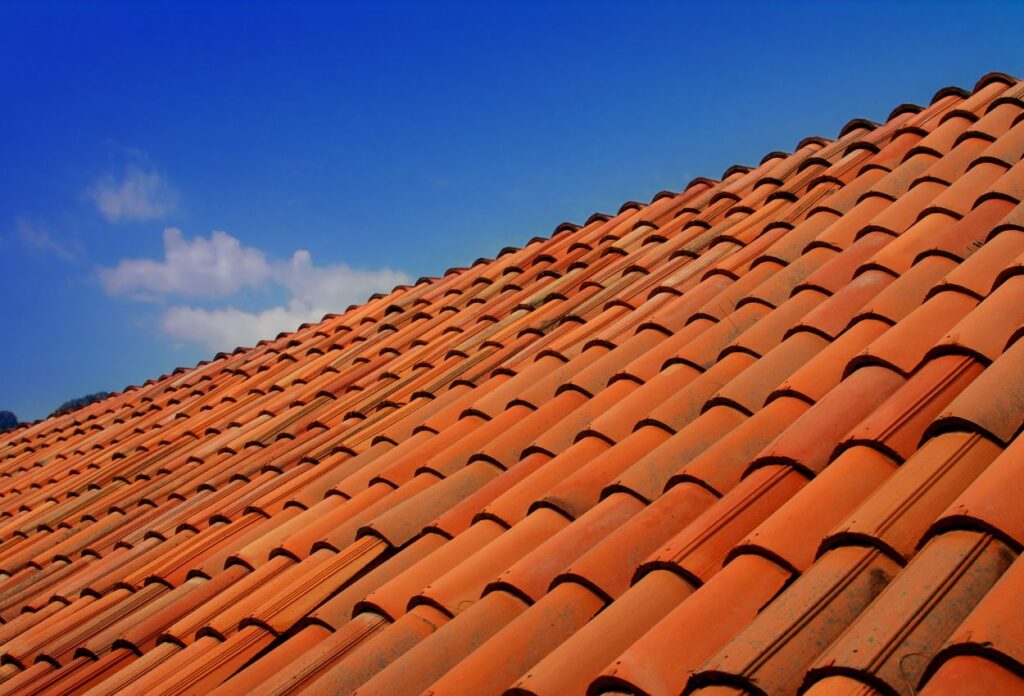
Lifespan: 50 to 100 years
Another great option with both beauty and remarkable durability, clay tiles have adorned roofs for centuries. Made from natural clay and strengthened through kiln firing, these durable roofing materials can protect homes for 50 to 100 years or more. They resist fire, mold, and decay while providing natural insulation, making them especially suitable for warmer regions. Their porous structure helps them withstand freezing and thawing without cracking. Though they often require extra support and professional installation, similar to slate, their distinctive appearance and energy-saving properties make them worth considering for those seeking a durable, long-lasting roof material.
| PROS | CONS |
| Provides natural insulation, helping regulate indoor temperatures. | Can break under impact from falling objects. |
| Ideal for hot climates and coastal areas due to salt resistance. | Complex installation process requires experienced professionals. |
| Available in various colors and styles to match different aesthetics. | Repairs can be expensive if tiles need replacement. |
#3. Concrete Tiles
Lifespan: 50 to 75 years
A practical alternative to clay, concrete tiles provide similar strength at a lower price. Made from cement, sand, and water, these durable roof material options last 50 to 75 years while resisting fire, strong winds (up to 200 mph), and impact damage. They come in styles that can mimic wood, slate, or clay, giving homeowners flexibility in design. However, concrete absorbs more moisture than clay, requiring periodic sealing to prevent water damage. While heavier than some materials, concrete tiles balance cost and performance for many homeowners seeking durable and cost-efficient roofing materials.
| PROS | CONS |
| More affordable than clay tiles while offering a similar look. | Needs periodic sealing to prevent water absorption and cracks. |
| Provides good insulation, improving energy efficiency. | Color may fade over time with sun exposure. |
| Resistant to pests, mold, and mildew. | Can be difficult to repair if individual tiles get damaged. |
#4. Metal Roof
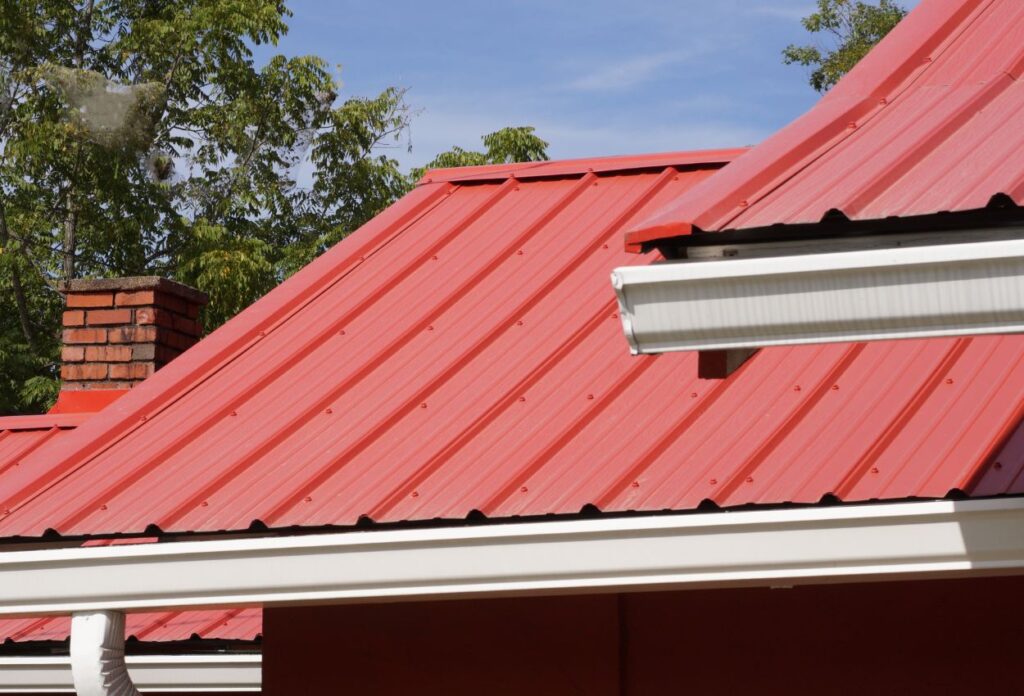
Lifespan: 40 to 80 years
Presenting exceptional longevity and performance, metal roofs last 40 to 80 years with proper care. It resists fire, wind, rot, and pests, making it ideal for areas with extreme weather like hurricanes and wildfires. Its reflective surface helps keep homes cooler and can cut cooling costs by up to 40%. Made from recycled materials and fully recyclable at the end of its life, metal roofs are an environmentally responsible choice and rank among the most durable roof material options. Though more expensive upfront than basic options, its minimal maintenance needs and durability provide long-term value.
| PROS | CONS |
| Lightweight, reducing stress on the home’s structure. | Higher upfront cost than asphalt shingles. |
| Reflects heat and lowers cooling costs in hot climates. | Can be noisy during heavy rain or hail without insulation. |
| Comes in a variety of styles, including panels and shingles. | Susceptible to rust if not properly coated, especially in coastal areas. |
#5. Synthetic Roofs (Composite, Polymer Shingles, Synthetic Slate & Shake)
Lifespan: 30 to 50 years
A modern alternative that mimics traditional materials, synthetic roofing options improve durability while maintaining aesthetic appeal. Made from polymer blends or composite materials, these light but durable roofing materials resist impact damage, UV rays, and harsh weather, typically lasting 30 to 50 years. Their lighter weight reduces structural demands while their recycled content makes them an eco-friendly choice. Though they may not perfectly capture the authentic look of natural materials, they offer excellent performance at a more accessible price point for those seeking durable and cost-efficient roofing materials.
| PROS | CONS |
| Designed to look like slate or wood but at a lower cost. | Doesn’t last as long as premium materials like slate or metal. |
| Withstands extreme weather, including hail and strong winds. | Repairs may require matching specific batches to maintain a uniform look. |
| Requires little maintenance over its lifespan. | Lacks the same high-end appeal as natural materials. |
#6. Wood Shake Shingles
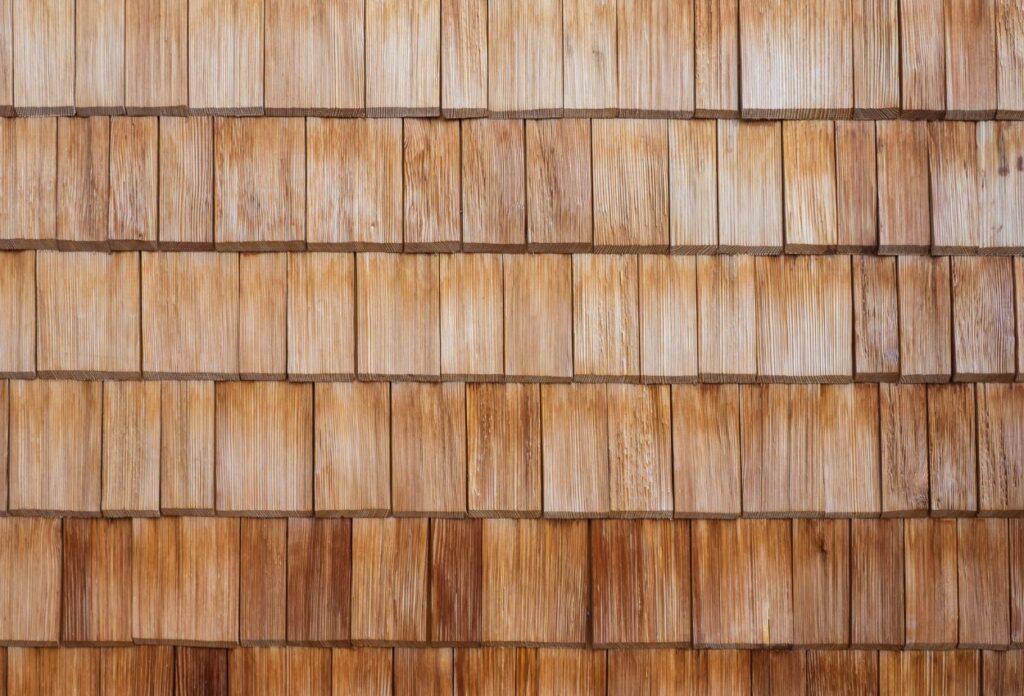
Lifespan: 20 to 40 years
Wood shake shingles are hand-split roofing materials crafted from durable woods like cedar, redwood, or cypress. Cedar develops a silver-gray patina over time, adding to its timeless appeal. Their rugged, textured surface gives homes a distinctive rustic charm, making them a popular choice for traditional and natural aesthetics. Unlike machine-cut shingles, shakes have an uneven thickness, adding depth to the roof. These shingles are versatile and can be installed on various roof styles. However, regular maintenance is necessary to protect against moisture, pests, and fire hazards.
| PROS | CONS |
| Offers a rustic, natural look that enhances curb appeal. | Susceptible to rot, termites, and fire unless treated. |
| Made from renewable wood sources. | Requires regular maintenance to prevent moisture damage. |
| Can be customized with stains or paints. | Not recommended in wildfire-prone areas unless specially treated. |
#7. EPDM Rubber Membrane
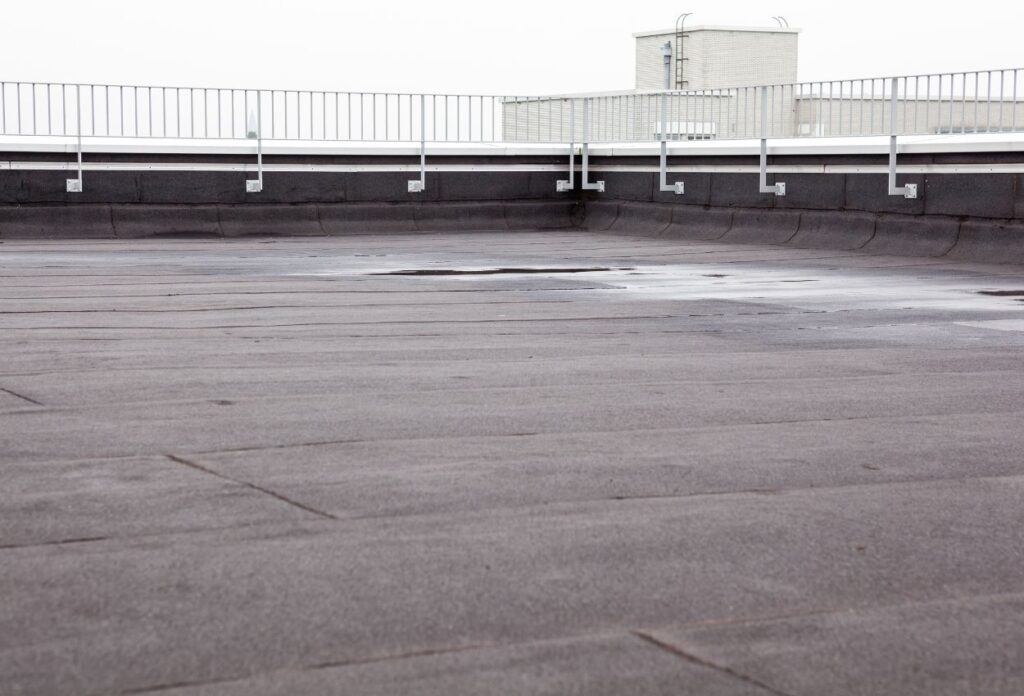
Lifespan: Approximately 30 years
Offering a practical solution for flat or low-sloped roofs, EPDM flexes with temperature changes, preventing cracks and leaks over its 30-year lifespan. It stands up well to UV exposure, wind, and hail while being lightweight and easy to install. Made with some recycled materials and recyclable at the end of its life, EPDM delivers environmental benefits along with its cost advantages. As a durable and cost-efficient roofing material, it provides reliable protection without excessive weight, though it can be punctured by sharp debris and its black surface absorbs heat in warmer climates.
| PROS | CONS |
| Affordable option for flat roofs. | Can be punctured by sharp objects or heavy impacts. |
| Easy to repair with adhesive patches. | Not suitable for steep roofs due to its flexible nature. |
| Resistant to UV rays, heat, and extreme weather. | May shrink over time, causing gaps if not installed correctly. |
#8. Solar Shingles
Lifespan: 25 to 30 years
Representing a cutting-edge innovation in roofing, solar shingles combine traditional protection with energy production. These innovative materials integrate solar cells directly into roofing materials, creating a seamless look while generating electricity to power your home. With a lifespan similar to quality asphalt shingles, they help reduce utility bills and environmental impact. Their effectiveness depends on sun exposure, making them better suited for sunny regions. While not traditionally classified among the most durable residential roofing materials, their dual functionality makes them an increasingly popular choice for homeowners.
| PROS | CONS |
| Creates renewable energy, reducing electricity bills. | High initial cost, much more than solar panels. |
| May qualify for tax credits and incentives. | Fewer brands and certified installers available. |
| Blends with the roof for a sleek look. | Performance depends on sun exposure and weather conditions. |
#9. Wood Shingles
Lifespan: 25 to 30 years
Wood shingles are machine-cut roofing materials made from cedar or other hardwoods. They have a uniform thickness and smooth surface, giving roofs a refined and elegant appearance. This sleek design suits modern architectural styles while maintaining durability. Unlike shakes, wood shingles are more resistant to moss and algae growth. While eco-friendly and biodegradable, they offer less protection against extreme weather conditions compared to shakes.
| PROS | CONS |
| Rustic, natural look boosts curb appeal. | Prone to rot, insect infestation, and fire damage without treatment. |
| Lightweight, reducing structural strain. | Needs routine sealing and maintenance. |
| Easier to install than heavier materials. | Skilled installation needed for proper fitting. |
#10. Asphalt Shingles
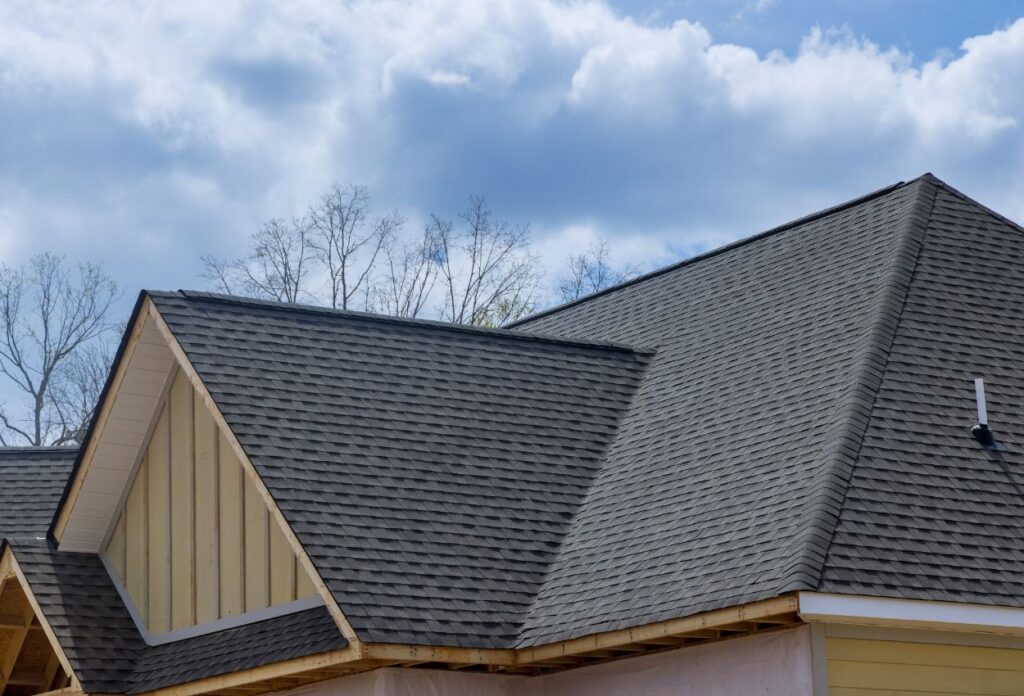
Lifespan: 15 to 30 years
Remaining America’s most popular roofing choice, asphalt shingles offer a practical balance of cost and performance. Typically lasting 15 to 30 years depending on quality and climate conditions, these lightweight shingles come in numerous colors and styles to complement any home design. Their straightforward installation process and widespread availability make them accessible for most homeowners looking for a less expensive yet durable roofing material. However, they offer shorter lifespans than premium materials and may not perform as well in extreme weather conditions.
| PROS | CONS |
| Affordable and widely available. | Can develop algae in humid areas unless treated. |
| Simple to install and repair. | May crack or curl in extreme heat. |
| Comes in many colors and styles. | Less impact-resistant than slate or clay. |
Bonus Option: Green Roofing System
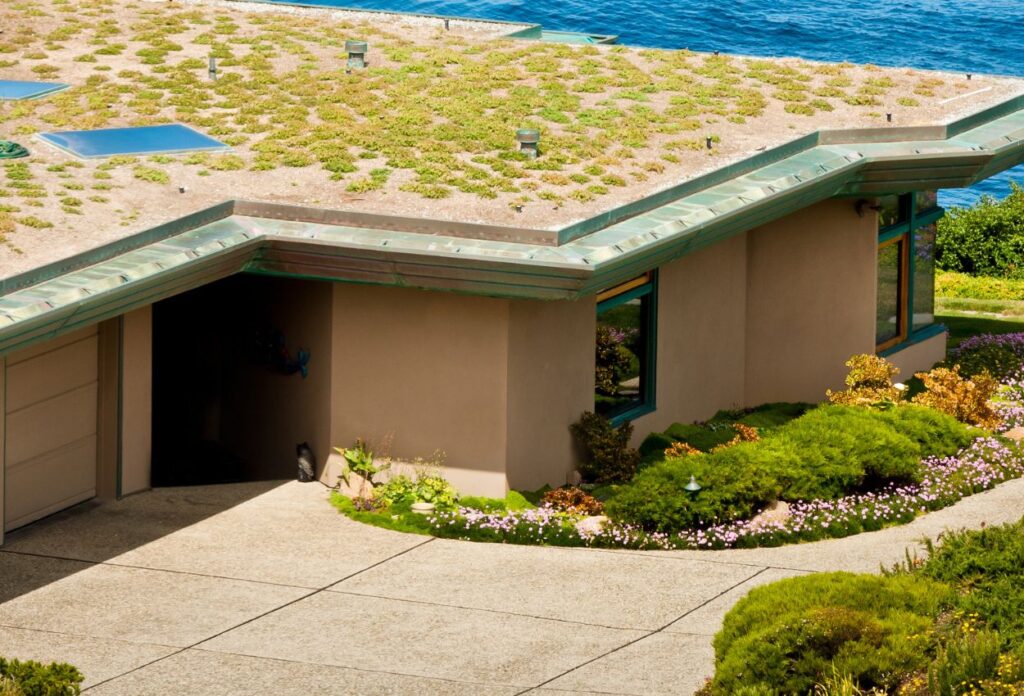
Lifespan: Varies, typically around 25 years
Green roofs, while not technically a roofing material, integrate vegetation over a waterproof membrane, blending architecture with nature. They improve air quality, reduce the urban heat island effect, and provide natural insulation. These eco-friendly roofing systems range from simple grass covers to elaborate gardens with shrubs and trees. In addition to enhancing home aesthetics, green roofs help manage stormwater runoff by absorbing rainwater. However, they require specialized installation and ongoing maintenance to sustain plant health.
| PROS | CONS |
| Eco-friendly, reducing carbon footprint. | Expensive to install due to extra support and setup. |
| Insulates well, lowering heating and cooling costs. | Requires ongoing plant care and irrigation. |
| Absorbs rain, reducing runoff. | Can attract pests if not maintained. |
Looking for a Durable Roof? Trust B & A Roofing and Gutters
As a homeowner, you know that a strong, long-lasting roof is key to protecting your home. At B & A Roofing and Gutters, we’re here to help you choose the best durable roofing material. Whether you prefer sturdy metal, classic slate, or other reliable options, our team provides expert guidance and quality installation through our roofing services. Trust us to deliver skilled craftsmanship and premium materials that keep your home safe for years. Contact us today at (601) 520-3183 to find the perfect roofing solution for your needs!
